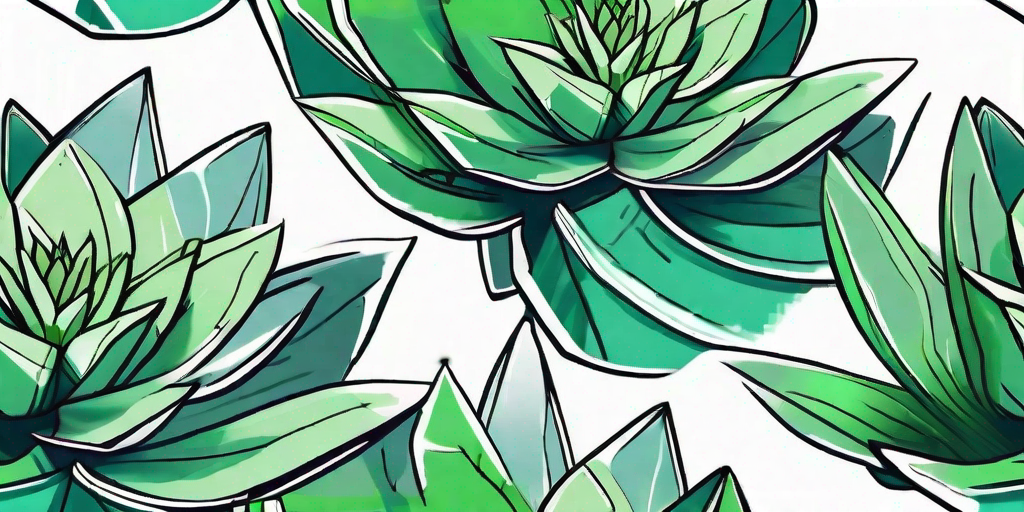
Ah, the Cobweb Succulent, a plant that's as intriguing as its name. With its rosette shape and cobweb-like threads, it's a plant that can add a touch of whimsy to any garden or home. But how do you grow and care for this unique plant? Well, dear reader, buckle up because we're about to embark on a journey into the world of Cobweb Succulents.
The Intriguing World of Cobweb Succulents
Before we dive into the nitty-gritty of growing and caring for Cobweb Succulents, let's take a moment to appreciate their beauty. These plants, also known as Sempervivum arachnoideum, are native to the Alps, Apennines, and Carpathians. They're known for their rosette shape and the thin, cobweb-like threads that cover their leaves. It's like Mother Nature decided to combine a spider's web and a plant, and the result was this quirky succulent.
Now, you might be thinking, "A plant that looks like it's covered in cobwebs? That's a bit creepy." But don't let its appearance fool you. The Cobweb Succulent is a fascinating plant that's not only beautiful but also incredibly resilient. It can survive in harsh conditions and requires very little care, making it a great choice for both beginner and experienced gardeners.
How to Grow Cobweb Succulents
Choosing the Right Soil
Like most succulents, Cobweb Succulents prefer well-draining soil. This means you should avoid using regular potting soil, which can retain too much water and cause the roots to rot. Instead, opt for a succulent or cactus mix, which has larger particles that allow water to drain quickly.
If you're feeling adventurous, you can also make your own succulent soil mix. Just combine one part potting soil, one part coarse sand, and one part perlite or pumice. This will give you a well-draining soil mix that your Cobweb Succulent will love.
Providing the Right Amount of Light
Cobweb Succulents love the sun. They thrive in full sun to partial shade, so make sure to place them in a location where they can get plenty of light. If you're growing them indoors, place them near a south or east-facing window.
But be careful not to expose them to intense afternoon sun, as this can cause their leaves to scorch. If you notice the leaves turning brown or crispy, it's a sign that your plant is getting too much sun.
How to Care for Cobweb Succulents
Watering Your Plant
When it comes to watering Cobweb Succulents, less is more. These plants are drought-tolerant, which means they can survive with little water. In fact, overwatering is one of the main causes of death for these plants.
So how often should you water your Cobweb Succulent? A good rule of thumb is to water it once the soil has completely dried out. This can be once a week in the summer and once every two to three weeks in the winter.
Feeding Your Plant
While Cobweb Succulents don't require a lot of feeding, a little bit of fertilizer can help them grow. Use a slow-release fertilizer at the beginning of the growing season, or a liquid fertilizer diluted to half strength every month during the growing season.
But remember, these plants are adapted to grow in poor soil conditions, so don't overdo it with the fertilizer. Too much can cause the leaves to become soft and mushy.
Frequently Asked Questions
- Why are the leaves of my Cobweb Succulent turning yellow?
This is usually a sign of overwatering. Cut back on the watering and make sure the soil is completely dry before watering again. - Can I grow Cobweb Succulents from seeds?
Yes, you can! However, it's much easier to propagate them from offsets, which are the small rosettes that form around the base of the plant. - Are Cobweb Succulents frost hardy?
Yes, they are! These plants can survive temperatures down to -30°F (-34°C). However, they should be kept dry during cold weather to prevent rot.
Conclusion
And there you have it, folks! Everything you need to know about growing and caring for Cobweb Succulents. With their unique appearance and easy care, these plants are a great addition to any garden or home. So why not give them a try? You might just find yourself caught in the web of Cobweb Succulent gardening (pun absolutely intended).
Remember, the key to a happy Cobweb Succulent is well-draining soil, plenty of light, and not too much water or fertilizer. Follow these tips, and your Cobweb Succulent will thrive. Happy gardening!















